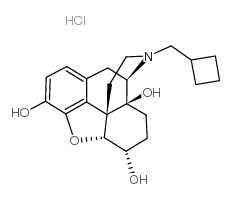Pain facilitation brain regions activated by nalbuphine are revealed by pharmacological fMRI.
Robert Gear, Lino Becerra, Jaymin Upadhyay, James Bishop, Diana Wallin, Gautam Pendse, Jon Levine, David Borsook
Index: PLoS ONE 8(1) , e50169, (2013)
Full Text: HTML
Abstract
Nalbuphine, an agonist-antagonist kappa-opioid, produces brief analgesia followed by enhanced pain/hyperalgesia in male postsurgical patients. However, it produces profound analgesia without pain enhancement when co-administration with low dose naloxone. To examine the effect of nalbuphine or nalbuphine plus naloxone on activity in brain regions that may explain these differences, we employed pharmacological magnetic resonance imaging (phMRI) in a double blind cross-over study with 13 healthy male volunteers. In separate imaging sessions subjects were administered nalbuphine (5 mg/70 kg) preceded by either saline (Sal-Nalb) or naloxone 0.4 mg (Nalox-Nalb). Blood oxygen level-dependent (BOLD) activation maps followed by contrast and connectivity analyses revealed marked differences. Sal-Nalb produced significantly increased activity in 60 brain regions and decreased activity in 9; in contrast, Nalox-Nalb activated only 14 regions and deactivated only 3. Nalbuphine, like morphine in a previous study, attenuated activity in the inferior orbital cortex, and, like noxious stimulation, increased activity in temporal cortex, insula, pulvinar, caudate, and pons. Co-administration/pretreatment of naloxone selectively blocked activity in pulvinar, pons and posterior insula. Nalbuphine induced functional connectivity between caudate and regions in the frontal, occipital, temporal, insular, middle cingulate cortices, and putamen; naloxone co-admistration reduced all connectivity to non-significant levels, and, like phMRI measures of morphine, increased activation in other areas (e.g., putamen). Naloxone pretreatment to nalbuphine produced changes in brain activity possess characteristics of both analgesia and algesia; naloxone selectively blocks activity in areas associated with algesia. Given these findings, we suggest that nalbuphine interacts with a pain salience system, which can modulate perceived pain intensity.
Related Compounds
| Structure | Name/CAS No. | Molecular Formula | Articles |
|---|---|---|---|
 |
Nalbuphine Hydrochloride
CAS:23277-43-2 |
C21H28ClNO4 |
|
Pharmacokinetics of nalbuphine hydrochloride after intraveno...
2011-06-01 [Am. J. Vet. Res. 72(6) , 741-5, (2011)] |
|
A review of systemic opioids commonly used for labor pain re...
2011-01-01 [J. Midwifery Womens. Health 56(3) , 222-39, (2011)] |
|
Ultrasound guidance characteristics and efficiency of supraz...
2012-09-01 [Paediatr. Anaesth. 22(9) , 841-6, (2012)] |
|
Evaluation of topical nalbuphine or oral tramadol as analges...
2011-11-01 [Vet. Ophthalmol. 14(6) , 358-64, (2011)] |
|
The mu/kappa agonist nalbuphine attenuates sensitization to ...
2013-03-01 [Pharmacol. Biochem. Behav. 104 , 40-6, (2013)] |